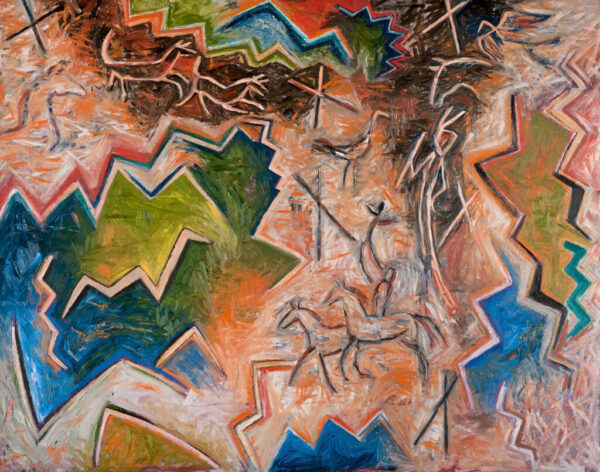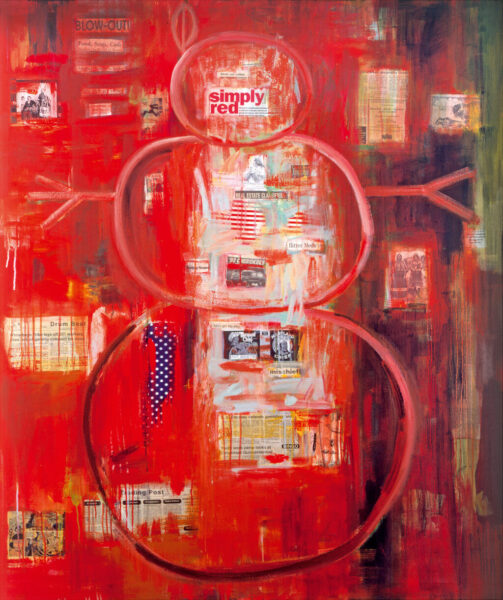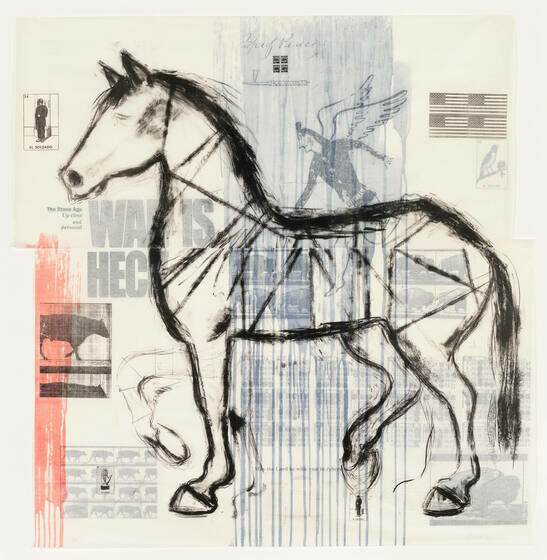
08 May TIO NYC: Two Woman-centric Shows: “Prima Facie” & Jaune Quick-to-See Smith!
Culture bathing in New York has been fun – and eye-opening. Into the home stretch our focus ws on rape. Have I got your attention now? Literal rape defined as a “type of sexual assault involving sexual intercourse or other forms of sexual penetration carried out against a person without their consent.” And figurative rape of a people and their land by white interlopers, namely our ancestors.
Go here for much more about Telluride Inside…and Out in New York.
‘Prima Facie”: John Golden Theatre through July 2,2023. Tickets here.

“Prima Facie” tells the story of ambitious lawyer-turned-victim/activist Tessa Ensler. (And yes, the nod to Eve Ensler of “The Vagina Monologue,” is very intentional, given that her work is about female empowerment and honors female sexuality in all its complexity. )
The plot follows Tessa, a criminal defense barrister whose view of the legal system changes dramatically after she herself is sexually assaulted.
“Tessa is a thoroughbred. A young, brilliant barrister who loves to win. She has worked her way up from working class origins to be at the top of her game; defending; cross-examining and lighting up the shadows of doubt in any case. An unexpected event forces her to confront the lines where the patriarchal power of the law, burden of proof and morals diverge,” explains the play’s website.
Written by criminal lawyer-turned-playwright Suzie Miller, the whole point of this one-woman tour de force is to show the disconnect between sexual assault and our legal system, which Miller feels falls flat when trying to reckon with “the act.”
The reason for that feels obvious: Rape is like a painting by Cecily Brown, which features a big, bold, complex narrative about desire and power, which can and does take many forms. In other words, rape scenarios are complex, non-linear events. Yet the black-or-white world of jurisprudence forces a victim to address the crime in a binary fashion (read yes or no, this happened or that happened – or did not), a fact which belies the hard truth of the act and its many victims. In the world Miller creates, a rape trial is analogous trying to fit a square peg into a round hole.
Miller’s goal in writing the play – really the launch of a crusade to change the system – was to underline the difference between the real truth and legal truth. And she manages to do that in with this in-your-face, incisive drama.
Over 90 minutes we learn there are, for example, four survival responses to rape: flight, fright, freeze or fawn, with shame, most of all, muddying up those troubled waters. To punctuate that point, we need only review the high-profile case of E. Jean Carroll v. Donald Trump and other #MeToo stories of sexual trauma. Sarah Polley’s terrific film, “Women Talking, ” also applies.
Here we would be remiss not to spill some metaphorical ink over the jaw-dropping performance of “Killing Eve” star Jodie Comer, an energizer bunny of an actress, whose work in “Prima Facie” has critics tripping over their superlatives.
Laurels the actress wholly deserves.
Comer is, after all, the eye of the storm triggered by Miller’s thunder, somehow managing to carry the weight of the drama and all its darkness on her shoulders like Atlas holding up the world. Her stamina in the face of this exhausting (for the audience too) performance in gobsmacking. We are left wondering how in the hell the lady pulls that off this hat trick night after night. Felt like watching a session of high-intensity interval training.
In the end, no doubt Comer, in this her Broadway debut, has earned (and re-earns with each show) all those hosannas. But is “Prima Facie”enjoyable theatre? No! Riveting, (albeit more than a bit polemical)? Yes.
We find ourselves in total agreement with Jesse Green’s review in The New York Times.
Jaune Quick-to-See Smith at The Whitney, through August 13, 2023. Tickets here.

For the Survival of Future Generations, courtesy The Whitney.

A Post-Colonial World, courtesy The Whitney.

War is Heck, courtesy The Whitney.
New Mexican artist Jaune Quick-to-See Smith, a Native American of French-Cree, Shoshone, and Salish blood, grew up in a household where creativity and horses were of equal importance, priorities reflected in her earliest painting and drawings.
Smith was/is very obviously influenced by the innovative work of artists such as Pablo Picasso, Paul Klee, Jasper John and Robert Rauschenberg, as well as traditional Native American art. Working with paint, fabric, newspaper clippings and other appropriated imagery, the abundantly talented artist is part of the new generation of Native American mark-makers who are addressing the myths of her ancestors in the context of current issues facing Native Americans. Their goal, her goal, is clearly helping to redefine their culture’s relationship to contemporary American life and its problematic past.
In her solo show at The Whitney, (her first New York retrospective), 130 piece over five decades – Smith has had more than 80 solo exhibits over the past 30 years – we see how, though a combination of representational and abstract images, the artist confronts subjects such as the destruction of the environment, governmental oppression of native cultures, and the pervasive myths of Euro-American cultural hegemony without noisome finger-wagging.
The show is just beautiful – an eye-dazzler with a clear agenda, reflecting Smith’s belief that “life’s work involves examining contemporary life in America and interpreting it through Native ideology.”
The Whitney sums up:
…Across decades and mediums, Smith has deployed and reappropriated ideas of mapping, history, and environmentalism while incorporating personal and collective memories. The retrospective will offer new frameworks in which to consider contemporary Native American art and show how Smith has led and initiated some of the most pressing dialogues around land, racism, and cultural preservation—issues at the forefront of contemporary life and art today…
Jaune Quick-to-See Smith now lives and works in Albuquerque, in close proximity to the land, her primary muse.
Go here to read


Sorry, the comment form is closed at this time.